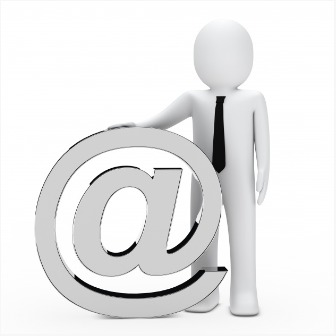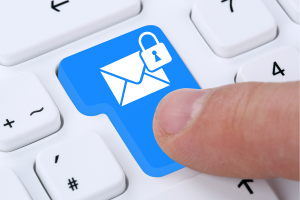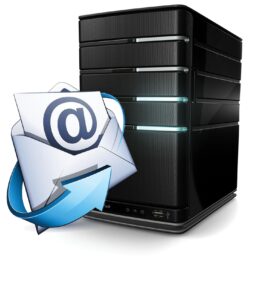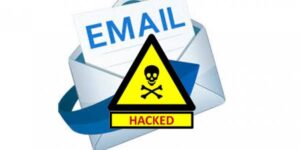1. Introduction
In this article, we discuss 24 business email etiquette rules that every professional needs to know. Don’t ruin your brand or lose that business because of making rookie mistakes when sending out emails.
2. What is Professional Email Etiquette?
Professional email etiquette refers to the code of conduct that guides our behavior when sending and receiving emails in a business context. These principles include guidelines covering appropriate language, layout, spelling/grammar, and general good manners. Of course, proper email etiquette also depends on whom you are writing to. However, it’s always safer to err on the formal side of these conventions in the workplace.
3. Why is Email Etiquette Important in Business?
Here are a few reasons why you should observe professional email etiquette:
- It will help you stand out as a professional, build stronger business relationships and represent your business well.
- Your business communication will be more efficient and you will be protected from potential loss of brand reputation or lawsuits. It will help your business grow. Proper email etiquette has the potential to increase your sales revenue or improve your brand reputation. In contrast, poor email etiquette can cause you to lose new clients, cause you to lose business or lead to costly mistakes.
4. Business Email Rules You Must Know
In this section, we give you guidelines on how-to and how not to write professional business emails.

i. Use a professional email address
Use a professional-looking email address rather than one that looks generic and puts the recipient in doubt about the authenticity of your business. To do this, you need to use an email address that is associated with your brand. Avoid using generic email addresses that may be misconstrued as spammers and hence likely be ignored or, worse still, blocked. Here are more reasons you should avoid using a generic/free email address for your business communication.
If you don’t already have a domain name for your business, click here to search for and sign up for a domain.
Use this to then sign up for a business email address for you and your other users.
If you’re a staff member and already have a company email address, use this for all your communication with clients and potential clients. Avoid using your personal email address for business purposes. Professional business email addresses increase your credibility and also improve your email deliverability substantially.
ii. Use a creative but concise subject line
Business email is like a competition. Your email needs to stand out from the crowd.
As a business, your email recipients are likely to be busy doing a dozen other things, including sifting through everything that comes into their mailbox daily. In fact, for many business professionals, whether to open an email is often purely based on the email’s subject line.
A strong email subject is brief, descriptive, and, where possible, action-oriented. For example, “Senior Management Meeting on 21/Oct/2019” is a better subject line than “Sales Meeting.” “Proposal for Delivery of CRM Software” is better than “Proposal Document”. “Application for HR Assistant Position” is better than “Curriculum Vitae”
A strong email subject is even more important if your email is being used for marketing purposes. Choose an email subject line that shows the recipient that you will address their business needs, and whatever you do, never send a business email without a subject line. Emails with no subject line are more likely to be marked as spam and sent to the trash without much thought.
iii. Avoid long-winded emails
Your intention in writing an email should be clear from the onset. Use short sentences and don’t beat around the bush because most professionals are quite busy and may not have time to read long essays, especially from strangers.
If you have a lot to put across in a message, it is best to request a face-to-face meeting or video call to discuss things further.
iv. Structure your email properly
Use paragraphs and leave a line between paragraphs to improve readability.
If you have many issues to put across, it is best to use bullets or numbered lists.
v. Use simple and standard fonts
Your messages must be easy to read. While every font has its time and place, it is best to keep your fonts and font sizes and colors simple in professional communication. This applies not just in email, but other written forms of business communication. Recommended font sizes are 11-point or 12-point. Choose classic, easy-to-read fonts such as sans serif such as Calibri, Helvetica, Times New Roma, Courier or Arial. And when it comes to color, black or dark blue is a safe and easy-to-read choice.
Use text highlighting, bolding, italics, and underlining sparingly. Although these effects can help make important information stand out, they can be considered chaotic and unprofessional if overused.
vi. Use appropriate salutations
Know your audience. Customize to your audience.
Consider your audience when deciding what sort of salutation to use in your email. Professional business email salutations can vary from formal to casual, but you must avoid coming across as informal.
While you may address a work colleague with whom you have a pretty good rapport, “Hey there,” it may not be appropriate for an email directed at the CEO of a company you’re marketing to. You may want to use a different greeting such as, “Dear sir” or, “Good afternoon Robert”.
It’s essential to learn how to use professional greetings when it comes to email etiquette.
Be careful when using casual greetings such as “Hey there” or “Hi everyone.” While casual, friendly greetings are appropriate in many types of emails, make sure you know what sort of audience you’re addressing.
| Formal – Yes, okay to use | Casual – No, do not use | Informal – No, do not use |
| Dear first name/Mr/Mrs lastname/ Sir/Madam | Hi | Heya |
| Good morning/afternoon | Hello | Yo! |
| Good day | Hey guys | Howdy! |
| Dear <Company name> | Hey babe | G’day |
| Hey girl | Wassup guys | |
| Using smileys or emojis |
Check out this article for more tips on how to start a professional email.
vii. Ensure you spell the recipient’s name correctly
Before clicking send, double-check that you have the spelling of the recipient correctly. This goes for both personal names and company names. It could be Mathew and not Matthew or Joan and not Joana and so on. Use correct capitalization too, for example, Microsoft 365 not Microsoft 365.
viii. Introduce yourself if it’s the first time you’re writing to this recipient
No matter how famous you think you are, professional email etiquette dictates that you should never assume that the recipient knows who you are. Especially if it’s the first time you’re contacting this person, start with a brief introduction of who you are. If you have been in touch with the recipient before but are not sure they remember you, remind them when you last spoke or how you know each other.
ix. Avoid using ALL CAPs or excessive exclamation marks and a lot of bold
NO MATTER HOW EXCITED YOU ARE, AVOID USING ALL CAPS OR EXCESSIVE EXCLAMATION MARKS!!!! YES, LIKE THIS!!!!
Just reading that was annoying, right? Now imagine receiving an email worded like this?
If you must use bold, use it in only one word or phrase in your email message.
Overusing either of these comes across as very unprofessional or, worse yet, immature. Use all caps and exclamation marks very sparingly and only when it is really necessary.
x. Consider your tone
Consider your tone when writing, and take into account that your facial expressions and vocal tone cannot be captured here. Read your email out loud before sending it to ensure it does not come across as abrupt, rude or negative.
To make things easier, we recommend using words such as please, thank you, etc.
xi. Be careful when using humor and sarcasm
Without the corresponding facial expressions or tone of voice, any humor or sarcasm used in business email can easily get lost in translation. Something you find hilarious might not be remotely amusing to someone else. In some cases, it may even come off as rude or hurtful. Therefore, it is advisable to avoid all forms of humor in professional business email exchanges unless you know the recipient very well.
xii. Leave emojis out of your business emails
No matter how tempting it may be to use them, emojis just do not come across as professional. Leave them for social media and instant messaging communication. Research indicates that emojis can make you appear less competent or confident about what you are saying.
xiii. Avoid communicating confidential information via email

Unless it is absolutely necessary, we recommend that you avoid communicating sensitive information via email. Email can end up in the wrong person’s mailbox more easily than you think. Especially when sent to a group of individuals, emails can easily be forwarded by the recipient and end up in the public domain. Keeping this in mind, it is better to leave out private and confidential information from business email communication.
xiv. Be mindful of email attachments
Reference any attachments to your email in the body of the email to reduce the chances that the recipient will not see it.
Avoid attaching large files to your emails. Where possible, use cloud storage or shared storage spaces to upload files such as presentations, pictures or videos and provide the link to allow the recipient to access it.
If cloud storage or online storage is not an option, compress the attachment before attaching it. Compressing ensures that the email attachment will take up less space in your recipient’s mailbox.
xv. Reply to all your emails (except spam)
While it is difficult to respond to every email that lands in your inbox, it’s good etiquette to try – even if it’s a single line acknowledging that you have received the email and will get back to the sender later. A short and quick reply such as, “I am in receipt of your email. I will get back to you,” is sufficient. Try to do this within the first 24 – 48 hours of receiving the emails – especially those from your clients or potential clients.
There are many applications out there that can be customized to help you automate this process. This is especially important for customer care, helpdesks or technical support desks. Your responses may include a “ticket number” to aid in follow-up in the future.
xvi. Set out-of-office replies when necessary

When you are away from office for an extended period of time (for example, on leave, holiday or attending a conference) and are unable or don’t plan to respond to your emails, professional email etiquette dictates that you should set an automated out-of-office reply to let people know that you cannot respond to them. Include your expected date of return or give options to the sender of an alternative contact person in case a matter is urgent.
xvii. Use the “reply-all” button sparingly

Avoid hitting the “reply all” button unless you know that everyone included on the list really needs to receive your response. Including those who have nothing to do with it may irritate them and negatively affect your brand, especially if the email chain continues for long.
xviii. Use the BCC field to protect recipient’s privacy
When sending out emails to a large number of users, some of whom do not know each other, we recommend that you include their email addresses in the bcc field to protect their privacy.
xix. Sign off professionally
Match your sign-off with your salutation and the tone of the email to maintain consistency. Popular sign offs in business email communication are:
- Sincerely
- Yours sincerely
- Best regards
- Kind regards
- Regards
- Thank you
Signing off leaves a lasting impression on the recipient – just like closing a meeting or phone call with a client
xx. Use a professional email signature
Professional business email signatures are an effective branding tool and are an easy way to market your business. Your business email signature can include your company logo, company name, your primary contact details – email address, telephone number and website. For more personalization, include your full name and job title.
All this information can provide additional ways for your client or business associate to reach out to you in other ways apart from responding to your email message. It is good to give your clients these alternatives.
It is important to keep your email footer professional. Don’t overdo it. Keep it simple.
xxi. Proofread, proofread, proofread
Your email recipients will likely notice errors in your email, and while the occasional typo happens to each of us, multiple mistakes and misspellings can look sloppy and unprofessional.
Turn on the spelling and grammar checker on your email client if you have one. However, remember that just like autocorrect on your smartphone, you can’t always rely on these.
xxii. Add the email address after you’ve composed the message – not before
To avoid accidentally sending out your business email before you’ve finished typing and proofreading it, it is a good safety measure to type out your email first, proofread, and then add the recipient’s email address (es) when you are ready to send the email message.
xxiii. Double-check all recipient email addresses

Always double-check your recipient email addresses before you press send. This is to avoid two things:
- Typing in the wrong address – could be just one letter difference – and the email either bouncing back or, worse still, ending up in a completely different person’s inbox.
- Particularly when you are selecting names from your contacts list on the To, cc or bcc lines, it is unfortunately very easy to accidentally choose the wrong contact from your address book – more so if you have several similar addresses such as support@, customercare@, helpdesk@ or people with similar names. This can be embarrassing for you as well as the person receiving the email by accident.
Imagine your client’s medical report ending up in the public domain because it landed in the wrong person’s inbox? Or, you attach a payroll spreadsheet, marketing campaign strategy, internal audit or internal financial reports in an email that ends up in the wrong person’s hands?
Failure to double-check your email could lead to loss of confidential personal, client or company data, which can easily result in lawsuits or loss of hard-earned brand reputation.
xxiv. Send targeted marketing communication

One of the best ways to personalize your communication is to segment your email lists. Various email marketing tools can help you automate this process
Segmenting your email communication makes it easier for you to target your campaigns based on your customer groups. This allows you to tailor your messages to your recipients, increasing the likelihood of getting positive feedback from your email marketing campaigns.
5. MailSafi for Professional Business Email Hosting
MailSafi Email Hosting comes in three plans. Our Enterprise plan has a range of productivity tools to help your team collaborate. These include cloud storage, instant messaging, co-authoring, file and document sharing, hold video and call conferences with colleagues, etc. You can also choose a hybrid of these email hosting plans for your business to meet the different needs of the users. Sign up for MailSafi Business Email today.
The business world’s recent move to primarily remote work in the face of the COVID-19 pandemic has significantly increased the business world’s reliance on email for communication. Innovative email service providers like MailSafi offer affordable, flexible email and collaboration solutions to help your teamwork better.
We hope you found these tips helpful! If you’re interested in learning more about what MailSafi Email Hosting can do for your business. Sign up for MailSafi Email Hosting for your business. You can even take advantage of our free trial for up to 30 days to decide whether the solution works for you.
![]()




